The 0.45ha parcel in the village of Sarragachies, in southwest France, is typical of vineyards planted in the 19th century – before phylloxera devastated Europe’s wine industry.
The vineyard is a mix of 21 grape varieties – mostly Tannat but also seven varieties that are completely unknown and “exist nowhere else on the planet”, according to Olivier Bourdet-Pees, head of the Plaimont wine cooperative, which buys the fruit.
I’m standing next to a female variety named Pédebernade 1 – after the family that has tended the vineyard for eight generations.
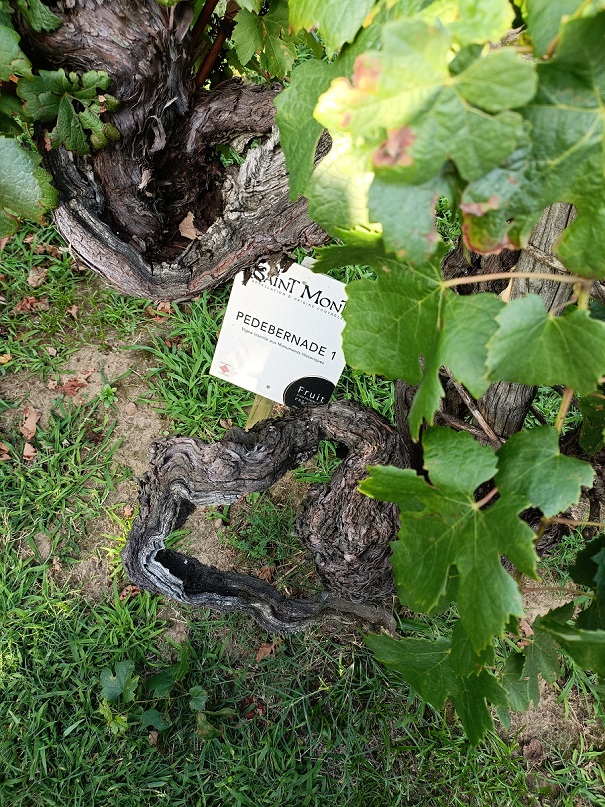
The vines were originally planted in squares about 2.3m apart with double vines on each corner supported on high wooden posts by willow ties. The square formation and lack of trellising enabled horses to work up and down or across the vineyard. No tractors have ever trundled between these vines.
Many of them have survived on their own roots for more than a century because the phylloxera louse doesn’t like the site’s sandy soil. The gaps were filled using the ‘marcottage’ (layering) technique.
This Monument Historique – and the rest of the 30-acre estate owned by the Pédebernade family – are in the heart of the Saint Mont appellation in the Gers region. Plaimont, an amalgam of three wine co-ops dating from 1979, controls 98% of the grapes in this AOC (Tannat, Pinenc, Cabernet Franc and Cabernet Sauvignon for the red and rosé wines; Gros Manseng, Arrufiac and Petit Courbu for the white wines) – as well as 55% of Madiran, 60% of Pacherenc du Vic-Bihl and 30% of Côtes de Gascogne. That’s 5,300ha and 800 growers in total.
The Monument Historique is one of a dozen very old vineyards that contribute to three of Plaimont’s most interesting wines.
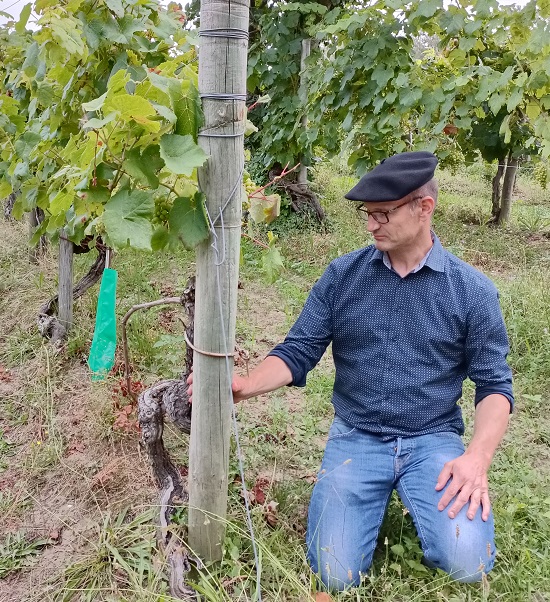
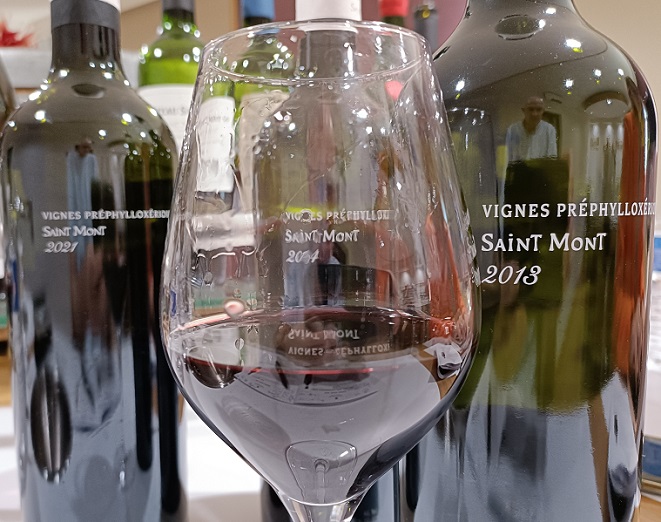
Vignes Préphylloxériques is a wine that comes from a 0.48ha plot of vines dating from 1871. Planted in a deep sandy soil, the plot resisted phylloxera when it arrived in France at the end of the 19th century. It has a majority of Tannat vines, one Pinenc vine and a few old white grape vines, which are not vinified in this wine. The vines require tailored attention: on some they will leave two clusters, on others four or five.
After rigorous hand selection while harvesting, the grapes are destemmed, crushed and transferred into small tanks. The juice used to go directly into barrels, but Olivier (above) says the extraction was difficult to manage. Now, with Tannat, he prefers “infusion, no extraction at all”. After MLF, the wine is aged in one-fill barrels for 12-15 months.
Discovering the potential of this plot is one of the biggest “souvenirs” of Olivier’s career, he says. “In very bad years (like 2013 and 2021) nothing compares to Vignes Préphylloxériques,” he says.
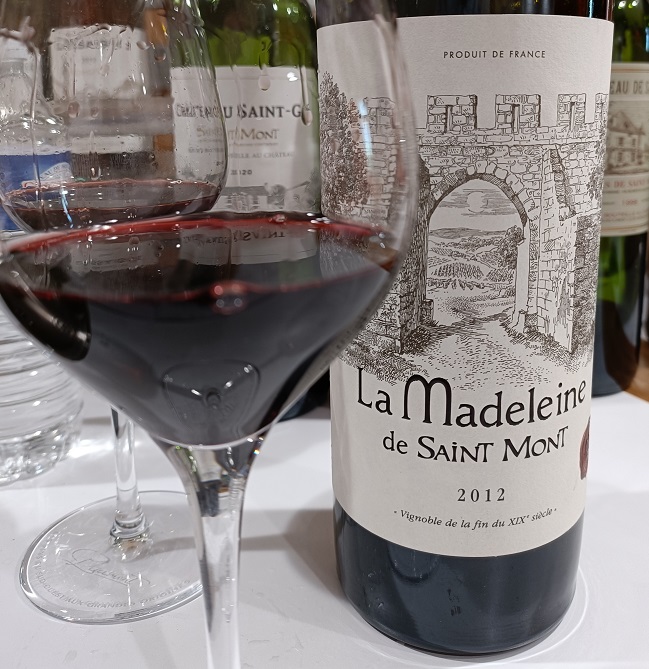
Another top-quality wine from an old vineyard is La Madeleine de Saint Mont.
La Madeleine de Saint Mont comes from a vineyard that was one of the first to be replanted (around 1880) after the phylloxera epidemic. The Tannat vines – plus a little Cabernet Sauvignon and Pinenc (Fer Servadou) – were grafted onto the hybrid Noah in the 1920s, but under the soil, so there are also some own roots involved.
The hand-harvested clusters are destemmed and then crushed before going into a vat. A few days of pre-fermentation maceration allow the aromas and colour to diffuse into the juices before the start of alcoholic fermentation, which takes place at about 26°C. In the first few days, regular gentle pump-overs are complemented by a manual punch-down to extract the colour and smooth tannins. After a maximum of 30 days, the free-run juice is run into barrels for natural MLF, finishing when the weather warms up in spring. After MLF, the wine is left in barrels and carefully monitored for 12-14 months. To bring the fruit to the fore, two-thirds of the wine is aged in 400L second-use barrels and the remaining third in barrels already used for two fills.
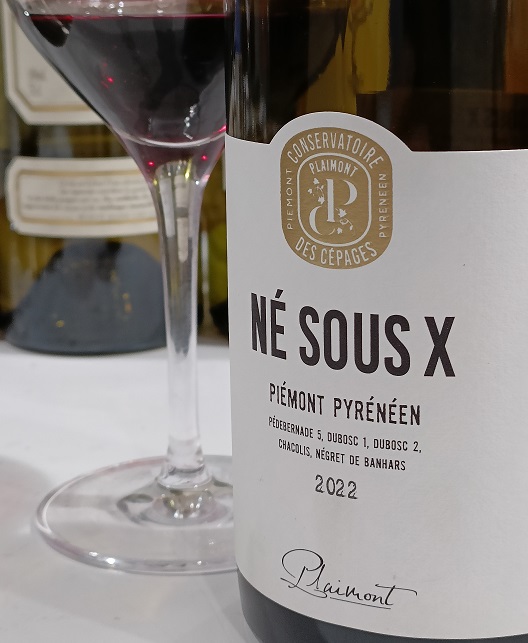
Né sous X 2022 – which is not yet available commercially – is a blend of five unknown red grape varieties with intriguing characteristics: Pedebernade 5 (low alcohol), Dubosc 1 (very late-ripening), Dubosc 2 (a close cousin of Tannat), Chacolis (related to Cabernet Franc), and Négret de Banhars (an aromatic offspring of Pinenc, Manseng Noir and Tannat).
Olivier says Tannat is showing great potential in pollinating the dioecious grapes Dubosc 1 and 2, which were found in a very old plot of Tannat in the village of Viella in the Madiran AOC.
They are named after the founder of the cooperative, André Dubosc, who believes “many of France’s grape varieties originated in the Pyrenees region”.
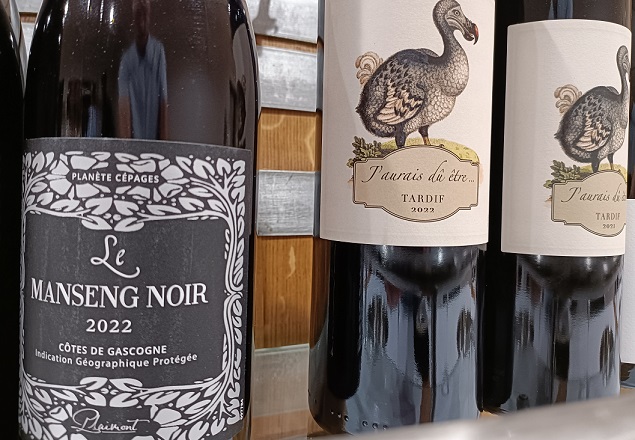
These three wines are symbolic of the exceptional genetic heritage of the Saint Mont appellation, which is located on the first slopes of the Pyrenean foothills. They come from varieties that fell out of favour after the phylloxera pandemic because of their low alcohol, late ripening, or female-only characteristics. But some of these characteristics are now sought-after qualities.
Plaimont has carried out extensive ampelographic research to identify these grape varieties and is propagating them in a conservatory. Ampelographer Jean-Paul Houbart identified 56 different grape varieties in the small Saint Mont vineyard area. Thirty-three of these were already listed in the ‘French Catalogue’; 11 were referenced in collections but not used in the vineyards, and 10 were previously unknown. Healthy specimens of 39 different varietals were planted in the conservatory by Plaimont and the Interprofession des Vins de Saint Mont in 2002.
Two of the most promising rediscovered varieties are Tardif and Manseng Noir.
Manseng Noir, a “close brother” of Tannat but with lower alcohol and less tannic, has been reintroduced in the Cotes de Gascogne IGP, providing fruity notes to IGP Cotes de Gascogne red blends. From one vine ten years ago, Manseng Noir is currently grown on 46ha, mainly around Condom. Olivier believes it could become the white wine region’s “hero red”. He says: “We do think it will be part of our history pretty soon.”
Tardif, a red grape variety found in the Historic Monument plot and then planted in the ampelographic conservatory, was added to the region’s official catalogue of grapes in 2017 and will be allowed in AOC Saint Mont blends from 2024: 60% Tannat and 40% Tardif. Tardif is of interest because of its longer vegetative growth: historically ripening around November 10 but now reaching optimum maturity in mid-October. Grapegrower Eric Fitan, president of AOC Saint Mont, says it might be “the grape of the future” for his region because it ripens late, produces less alcohol and is spicier than Syrah but is still from the region, so they can be “true to ourselves”.
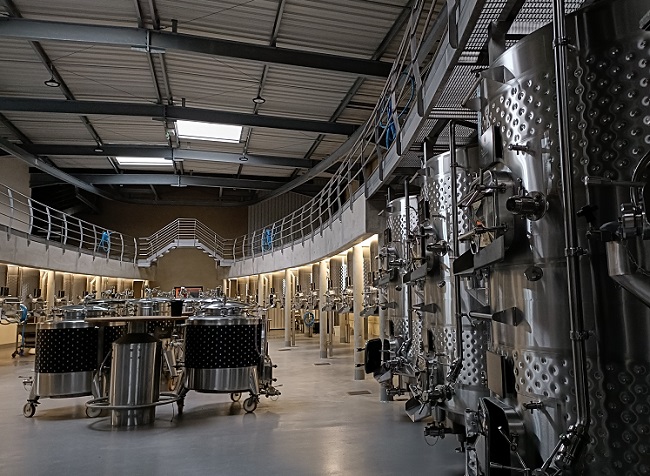
At the experimental vineyard in Saint Mont each grape variety has 20 vines, enough for a 50L vinification, which is done at Plaimont’s new research winery, L’atelier des Cépages (above). The €3m winery, which opened in 2022, was partly paid for by the French government.
As we tour the site, Olivier explains why this development was important for the southwest region: “Everything is changing so quickly: the will of society, the climate… We have to adapt to this. For centuries, adaptation was the rule in vineyards. But then we fixed everything with the beginning of the appellations – we stopped adapting and we are paying something now. In some regions – Bordeaux, Burgundy, Montpellier – you have the best people proposing changes in five years, in ten years, maybe new solutions for winegrowers but, here, who is doing this? If we don’t do this, who will? Small growers are not able to afford it.”
Along the walls are tanks from Italy (1,000-5,000L in capacity), but almost everything else in the winery comes from within a 50km radius. In the centre are specially made 50L tanks on legs with wheels. Their valve sizes are the same as the larger tanks, so they can replicate things such as remontage when they increase the volume of their experimental vinifications.
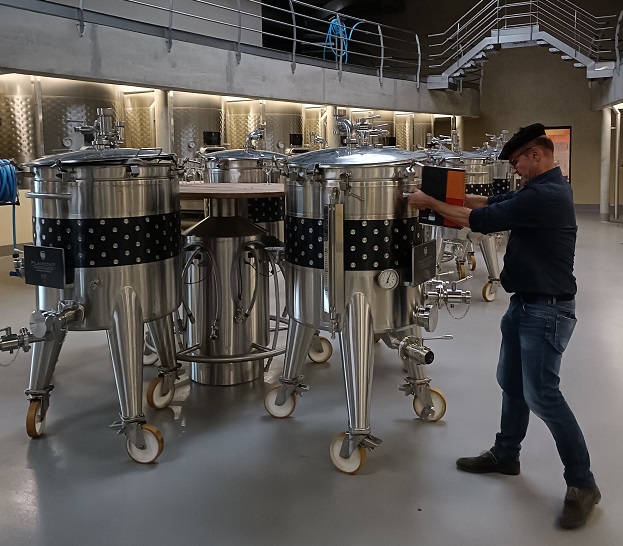
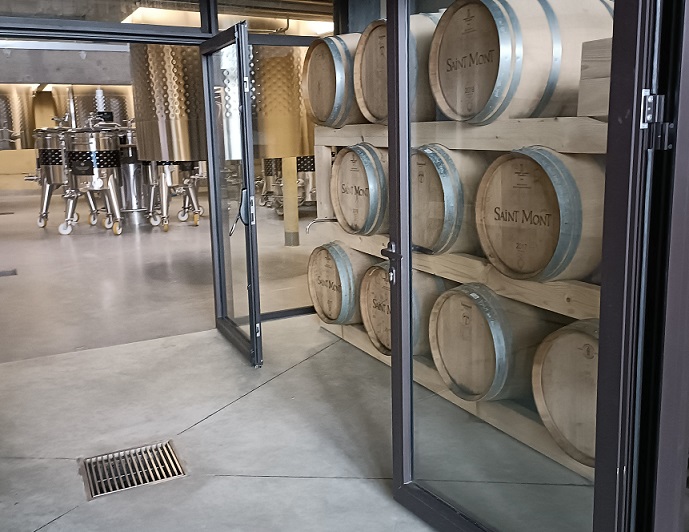
Next to this room is a small barrel room where the temperature can be controlled at 15-16°C for MLF. In the main barrel room, beyond the Bordeaux, Burgundy, Beaujolais and locally-made barrels, there is a corner that lies empty. This small space is awaiting the arrival of concrete eggs and amphorae for experiments with Tannat.
“We love the idea, but it’s difficult to have a real knowledge about them,” Olivier says, as they are never tasting the same wine from one vintage to the next.
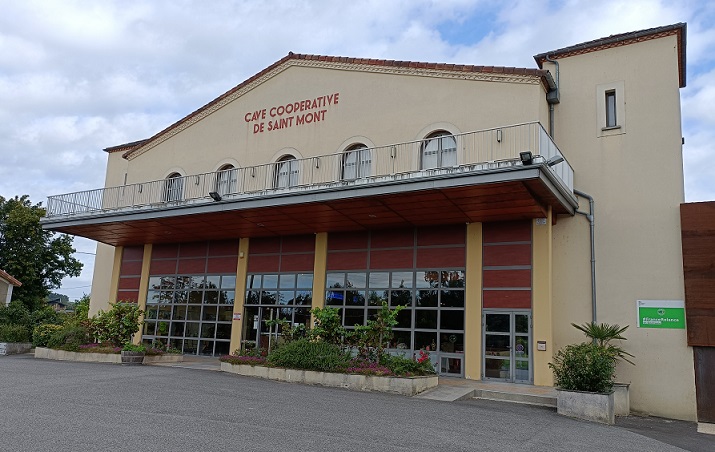
While in the region, I visited several of the sites owned by the cooperative and tasted a wide range of wines made from the indigenous grape variety, Tannat. The wines from AOC Madiran and AOC Saint Mont range from young and fruity to more complex with great ageing potential.
The winemaking ethos evident in the Vignes Préphylloxériques and La Madeleine de Saint Mont provides the framework for all the Tannat wines:
- Gentle extraction with long macerations, including a cold soak pre-fermentation;
- Inoculation with selected yeasts as Tannat has a low pH and high sugar/alcohol levels;
- Fermentation in stainless-steel tanks at 26°C with light pump-overs and punch-downs in the early stages;
- Maceration times of three to four weeks;
- MLF in tank or barrel;
- 225L French oak barrels for 12-14 months’ ageing. A slow, light toasting is preferred plus an equal mix of new, one-fill and two-fill;
- Four months in tank to harmonise blends.
Some of the standout wines
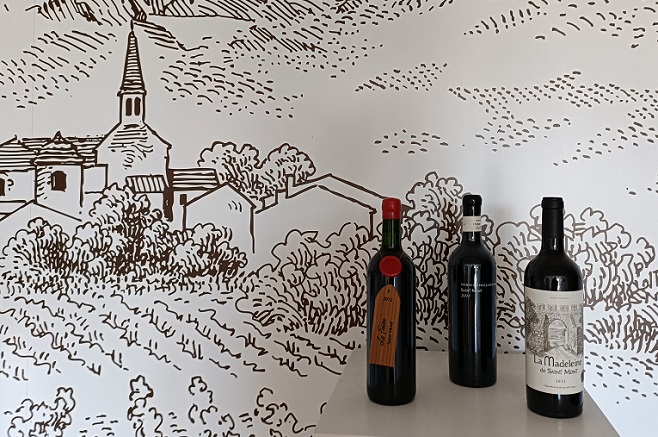
Le Faîte, with its wooden label, is more than the iconic wine of the Saint Mont appellation. The blending of the red and white wines is a major event every year, carried out by big names in the worlds of wine and food. The 2007 that I’m tasting is a blend of 70% Tannat, 20% Pinenc and 10% Cabernet Sauvignon put together by Gerard Basset MW and Michel Bettane.
The grapes come from different plots of the highest quality vineyards located on the terroirs of Plaisance, Aignan, and Saint-Mont – the locations of the three wine cellars which, in 1979, united to create Plaimont (with another major wine cellar, Condom in the Côtes de Gascogne and Côtes du Condomois PGIs, joining them in 1999).
The grapes are harvested by hand and vinified separately. Fermentation with selected yeasts is carried out in temperature-controlled stainless-steel vats at 26°C. The total maceration time is around 25 days for the Tannat and 20 days for the Pinenc and Cabernet Sauvignon. After MLF, the wine is blended and aged in 225L French oak barrels, one-third of which are new. The wine is racked three times during its 12 months of barrel-ageing. It also ages for an additional four months in vats “to bring complete harmony” to the vintage.
As an experiment, some of the bottles are being aged in the vast caves used to mature Roquefort cheese. Some of the tunnels in Roquefort-sur-Soulzon are 300m deep and 300m wide. Olivier says they give “a completely different evolution”.
‘It’s really infusion’
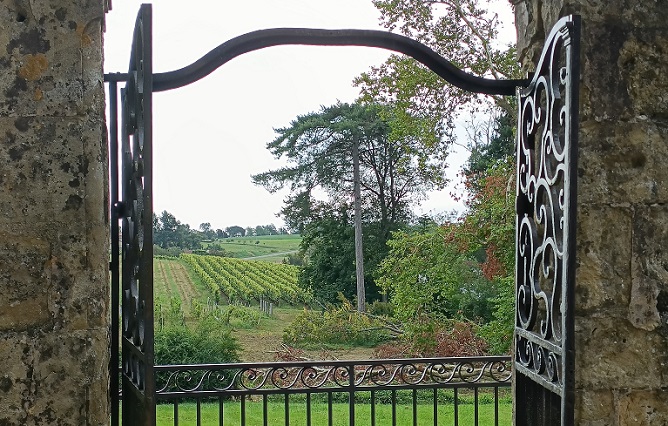
Tasting Monastère de Saint Mont 2008 and 2018, I ask Olivier about the main changes in winemaking over those ten years. He tells me it concerns the protocols for extraction. He sums up the difference this way: “We are more and more getting the maturity that allows us to avoid physical extraction so it’s really infusion – much more than it was.”
They extract “a lot” at the beginning of the fermentation, which takes place in tanks. This includes pump-overs and punch-downs and three weeks’ maceration. Some years the wine goes into barrels for MLF. As with Le Faîte, ageing is in 225L French oak barrels for 12-14 months (40% new, 40% one fill, 20% two fills), with the wine racked three times to aerate it during the ageing process, and a further four months in tank to “hone and round out the wine”.
The handpicked grapes for this cuvée come from a vineyard perched at the top of the steep village of Saint Mont. The vineyard – now owned by Plaimont – dates from the origins of the founding of the monastery in the 11th century. The high site with its smectite clay content and northeast-facing slopes produces slower-ripening Tannat grapes with great tannic structure, power and lively acidity.
The handpicked grapes for the Château Arricau-Bordes blend (90% Tannat, 10% Cabernet Sauvignon) get a pre-fermentation maceration: five to six days at less than 10°C, with 3-4g/hL of selected yeast and 30mg/L of SO2 added for protection. Extraction, again, involves light pump-overs, cap-punching, and rack and return work. Temperatures are carefully controlled throughout the alcoholic fermentation. Starting at 22°C, the activity of the yeast causes the temperature to rise to 28°C. The maceration of the Tannat is for 25 days maximum; 20 days for the Cabernets and Pinenc (when it’s used).
After running off the free run into a clean tank, the pressed wine is kept separate. MLF occurs naturally between November and March. Once the malolactic conversion is complete, the wine is blended and then aged in French oak barrels (30% new) for 11 months. Two to three rackings are carried out to aerate the wine. Again, it is finished with four months in tank.
Olivier comments that they are “working more and more to make the wines more approachable”.
At the beautiful Château de Crouseilles, I taste the 2018 and yet-to-be-released 2020. It’s a familiar blend (90% Tannat, 10% Cabernet Sauvignon). The handpicked grapes from four growers who work the 16ha around the chateau get a cold pre-fermentation maceration (24 hours) and light pump-overs for the first few days before fermentation at 26°C. Total maceration time for the Tannat is 25 days to “polymerise the tannins”. MLF takes place in tanks before 12-18 months of ageing in oak barrels “to tame the tannins”. The barrels are then selected, blended and the blend is left to integrate in a tank for six months before bottling.
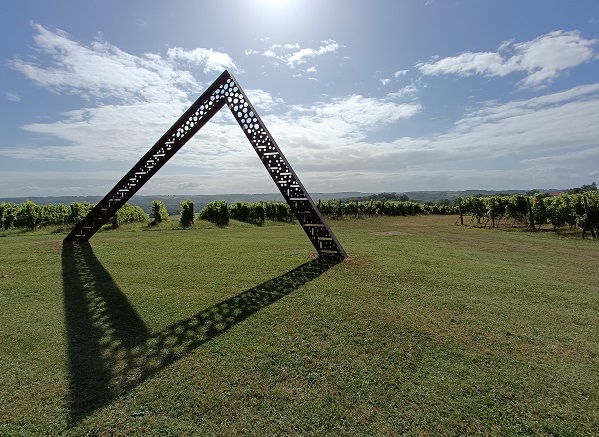
As well as majestic views of the vines and hills, Château de Crouseilles is dotted with symbolic sculptures. One installation shows the pebbles from the vineyard balancing on each other, in columns, demonstrating how a winegrower creates the perfect balance through patience and skill. There is also a sculpture of a large worm called “Portrait of an Engineer” while a metal installation depicts the local terroir.
Staring at it to make sense of the holes and shapes, I realise the Madiran terroir characterises Plaimont's wines. At the highest altitudes, the pebbles of the Nappe de Maucor lend a roundness and sweetness to the wines. The eastern slopes stretch down to meet the gravelly shales where the grapes fully ripen in the rising sun. This brings the increasingly desirable attributes of drinkability and depth to the wines. On the opposite side, the steep western slopes of clay-limestone temper the intensity and bring out the vibrancy of Tannat. It used to be one of the easiest grapes to identify blind because of its harsh tannins and high acidity, but thoughtful winemaking and gentle hands have made it the star of some of France’s most exciting and best-value red wines.


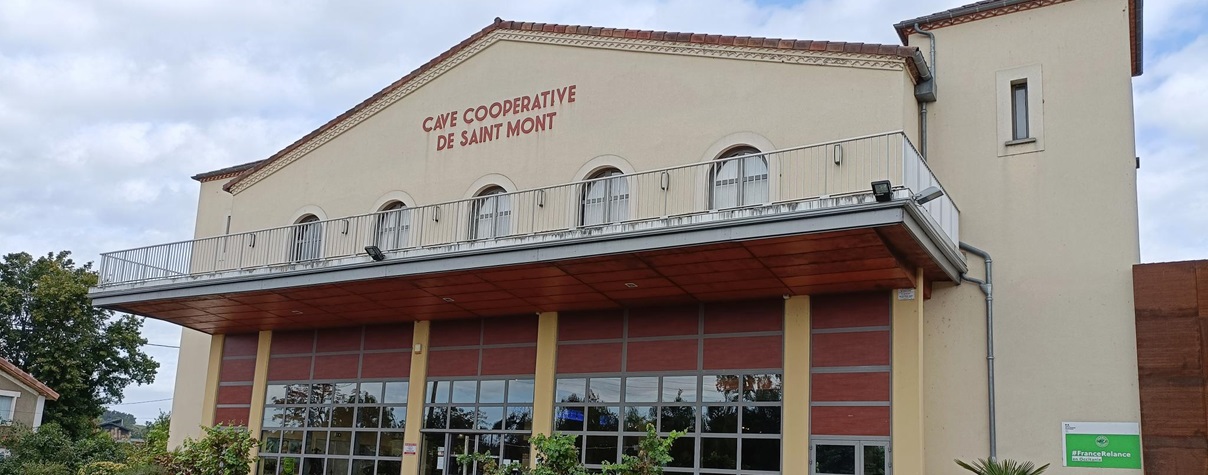










.png)






